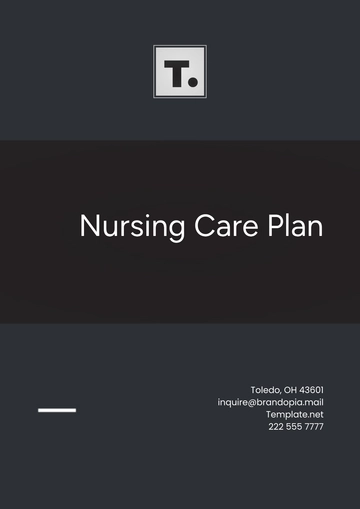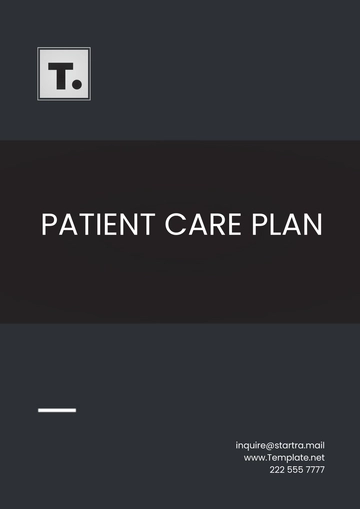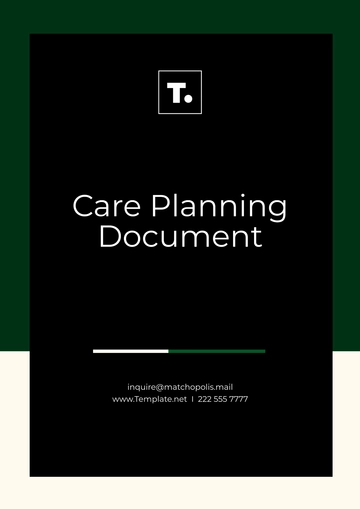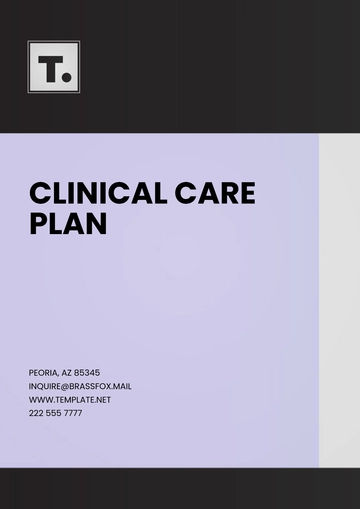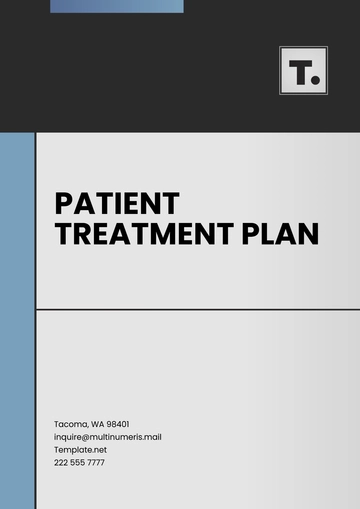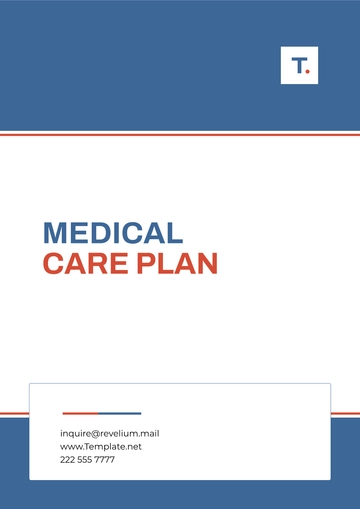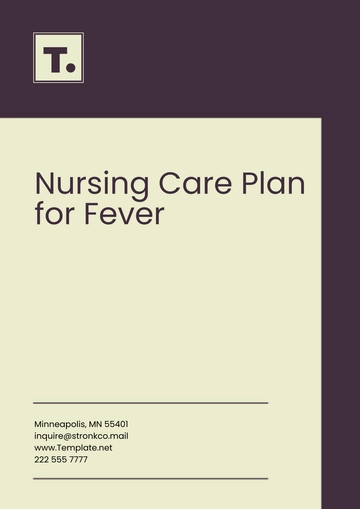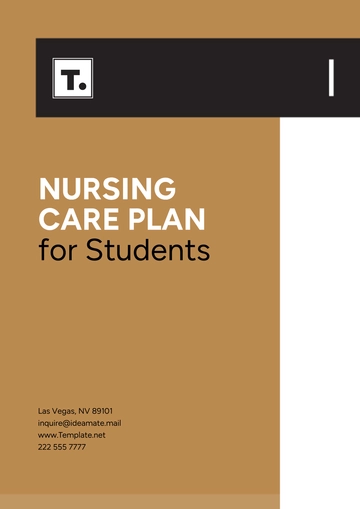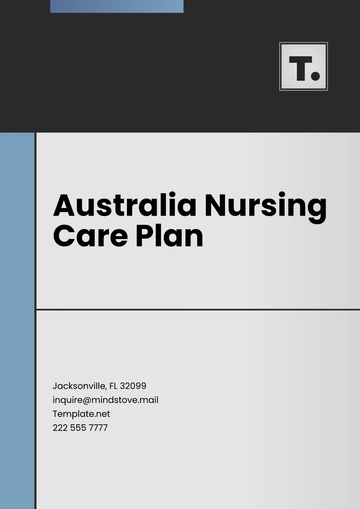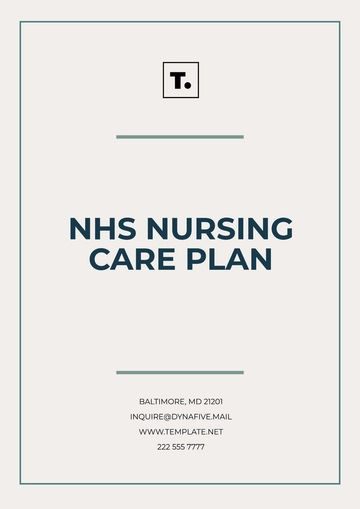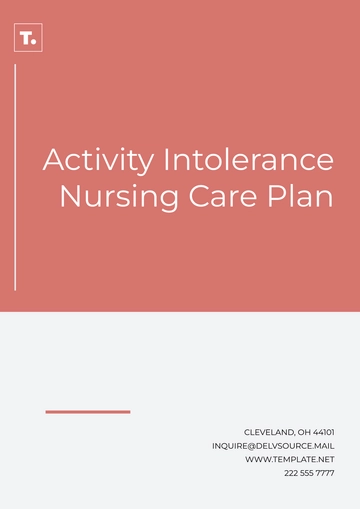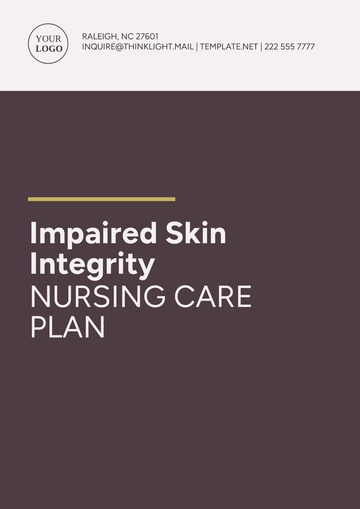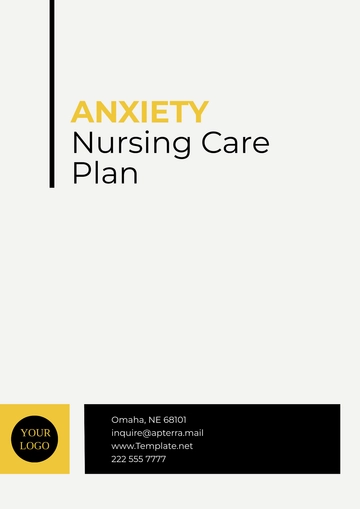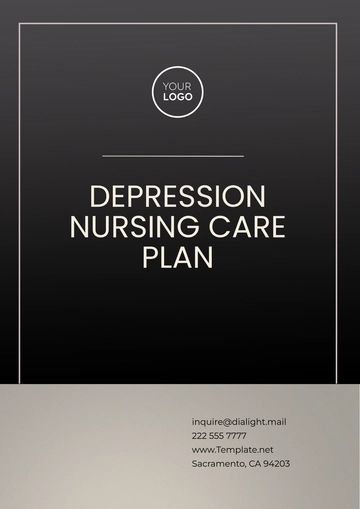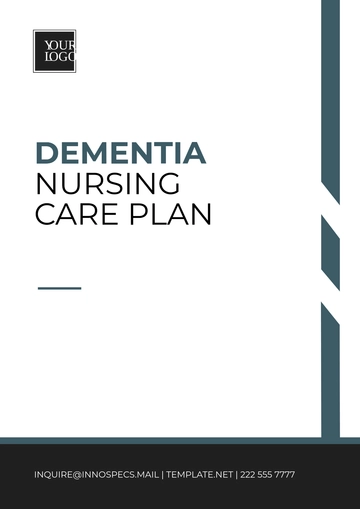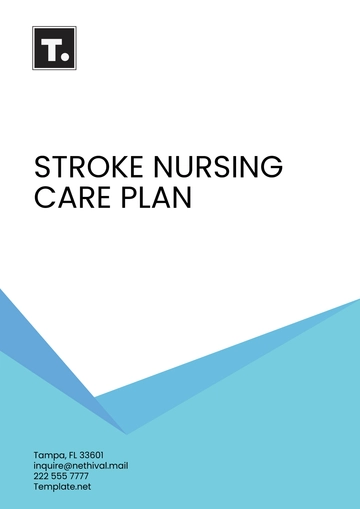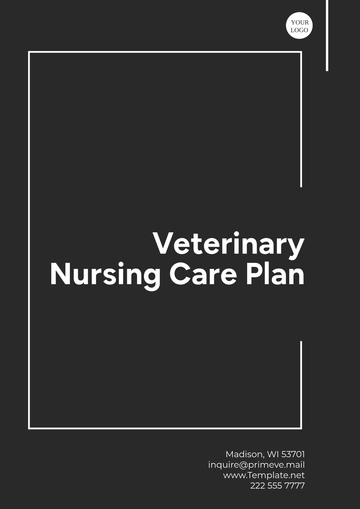Free Home Care Care Plan

Client Information | Details |
|---|---|
Client Name: | [Your Name] |
Date of Birth: | [Your DOB] |
Address: | [Your Address] |
Emergency Contact: | [Emergency Contact Name] |
Emergency Contact Phone: | [Emergency Contact Phone] |
I. Introduction
This Home Care Plan is designed to provide comprehensive care and support for [Your Name], a [age]-year-old [gender] individual, enabling them to maintain their independence and quality of life while living in their own home. The goal is to address their specific needs and preferences while ensuring their safety and well-being.
II. Assessment
A comprehensive assessment, including physical, cognitive, and psychosocial evaluations, has been conducted by a qualified healthcare professional. This assessment has identified the following areas of concern and focus for care planning:
Physical abilities and limitations (mobility, strength, balance)
Cognitive functioning (memory, decision-making, problem-solving)
Emotional well-being (mood, social engagement, coping mechanisms)
Medical conditions and medications
Home environment (safety, accessibility, hazards)
III. Goals
Promote Independence: Support [Your Name] in maintaining autonomy and dignity by encouraging participation in activities of daily living to the best of their ability.
Ensure Safety: Implement measures to reduce fall risks, prevent accidents, and create a safe living environment.
Manage Medical Conditions: Monitor and manage chronic illnesses, administer medications as prescribed, and coordinate with healthcare providers for optimal management.
Provide Emotional Support: Offer companionship, active listening, and emotional support to address feelings of loneliness, anxiety, or depression.
Maintain Social Connections: Facilitate opportunities for social interaction, engagement in meaningful activities, and participation in community events to combat social isolation.
IV. Care Services
Personal Care:
Assistance with bathing, grooming, dressing, and toileting, ensuring privacy, dignity, and appropriate hygiene.
Mobility Support:
Assistance with transfers using proper techniques and devices, ambulation support with mobility aids for walking, and range of motion exercises to enhance joint flexibility and prevent contractures.
Medication Management:
Medication management, including timely reminders, organization, refill coordination, and monitoring for side effects with reports to healthcare providers.
Meal Preparation and Nutrition:
Meal planning is tailored to dietary preferences, restrictions, and nutritional needs, with careful preparation of balanced meals. Assistance includes help with feeding and ensuring safety during meals.
Household Tasks:
Light housekeeping, laundry assistance, and running errands including grocery shopping and picking up prescriptions.
Companionship and Emotional Support:
Engage in chats, reminisce, and leisure activities for mental stimulation, offer emotional support and empathy, and accompany [Patient's Name] on outings, walks, or visits to loved ones.
Transportation and Appointment Assistance:
Arrange and coordinate transportation for healthcare-related appointments, including scheduling and tracking visits.
V. Schedule
Daily Schedule
Daily Schedule | Activities |
|---|---|
Morning | Assist with morning routines, including personal care, breakfast, and medication administration. |
Afternoon | Engage in activities or outings, prepare lunch, and attend medical appointments or therapy sessions if scheduled. |
Evening | Prepare dinner, assist with evening routines, administer medications, and provide companionship. |
Weekly Schedule
Weekly Schedule | Activities |
|---|---|
Monday to Friday | Schedule regular activities, errands, and social outings as desired by [Patient's Name]. |
Weekends | Plan leisure activities, family visits, or community events to promote social engagement and well-being. |
VI. Caregiver Instructions
Caregiver Instructions | Description |
|---|---|
Familiarize Yourself | Review [Patient's Name]'s care plan, medical history, and preferences to provide personalized care. |
Communicate Effectively | Establish open communication with [Patient's Name], actively listen to their needs, and provide clear instructions. |
Observe and Report | Monitor [Patient's Name]'s condition, behaviors, and responses to care interventions, and report any changes. |
Promote Independence | Encourage [Patient's Name] to participate in activities and decision-making to foster a sense of empowerment. |
Ensure Safety | Maintain a safe environment, implement fall prevention strategies, and use proper body mechanics during care activities. |
Provide Compassionate Care | Approach care with empathy and kindness, acknowledging [Patient's Name]'s dignity and individuality in all interactions. |
VII. Emergency Plan
In the event of an emergency, follow these steps:
Assess the Situation: Evaluate the nature and severity of the emergency, ensuring your safety first.
Call for Help: Dial emergency services (911) to request medical assistance if needed.
Notify Emergency Contacts: Contact [Emergency Contact] to inform them of the situation and provide updates as necessary.
Refer to Care Plan: Consult [Your Name]'s care plan and medical records for relevant information, including allergies, medical conditions, and emergency contacts.
Stay Calm and Reassure: Remain with [Your Name], provide comfort, and follow any instructions from emergency responders until help arrives.
VIII. Conclusion
This Home Care Plan aims to support [Your Name] in maintaining independence, dignity, and quality of life while residing in their own home. By implementing personalized care services and adhering to the outlined goals and objectives, we strive to meet their unique needs and ensure their well-being.
- 100% Customizable, free editor
- Access 1 Million+ Templates, photo’s & graphics
- Download or share as a template
- Click and replace photos, graphics, text, backgrounds
- Resize, crop, AI write & more
- Access advanced editor
Elevate home care services with Template.net's Home Care Plan Template. Customizable to meet diverse patient needs, it streamlines care provision. Editable in our AI Editor Tool for seamless adaptation to individual requirements, ensuring optimal home care experiences.
You may also like
- Finance Plan
- Construction Plan
- Sales Plan
- Development Plan
- Career Plan
- Budget Plan
- HR Plan
- Education Plan
- Transition Plan
- Work Plan
- Training Plan
- Communication Plan
- Operation Plan
- Health And Safety Plan
- Strategy Plan
- Professional Development Plan
- Advertising Plan
- Risk Management Plan
- Restaurant Plan
- School Plan
- Nursing Home Patient Care Plan
- Nursing Care Plan
- Plan Event
- Startup Plan
- Social Media Plan
- Staffing Plan
- Annual Plan
- Content Plan
- Payment Plan
- Implementation Plan
- Hotel Plan
- Workout Plan
- Accounting Plan
- Campaign Plan
- Essay Plan
- 30 60 90 Day Plan
- Research Plan
- Recruitment Plan
- 90 Day Plan
- Quarterly Plan
- Emergency Plan
- 5 Year Plan
- Gym Plan
- Personal Plan
- IT and Software Plan
- Treatment Plan
- Real Estate Plan
- Law Firm Plan
- Healthcare Plan
- Improvement Plan
- Media Plan
- 5 Year Business Plan
- Learning Plan
- Marketing Campaign Plan
- Travel Agency Plan
- Cleaning Services Plan
- Interior Design Plan
- Performance Plan
- PR Plan
- Birth Plan
- Life Plan
- SEO Plan
- Disaster Recovery Plan
- Continuity Plan
- Launch Plan
- Legal Plan
- Behavior Plan
- Performance Improvement Plan
- Salon Plan
- Security Plan
- Security Management Plan
- Employee Development Plan
- Quality Plan
- Service Improvement Plan
- Growth Plan
- Incident Response Plan
- Basketball Plan
- Emergency Action Plan
- Product Launch Plan
- Spa Plan
- Employee Training Plan
- Data Analysis Plan
- Employee Action Plan
- Territory Plan
- Audit Plan
- Classroom Plan
- Activity Plan
- Parenting Plan
- Care Plan
- Project Execution Plan
- Exercise Plan
- Internship Plan
- Software Development Plan
- Continuous Improvement Plan
- Leave Plan
- 90 Day Sales Plan
- Advertising Agency Plan
- Employee Transition Plan
- Smart Action Plan
- Workplace Safety Plan
- Behavior Change Plan
- Contingency Plan
- Continuity of Operations Plan
- Health Plan
- Quality Control Plan
- Self Plan
- Sports Development Plan
- Change Management Plan
- Ecommerce Plan
- Personal Financial Plan
- Process Improvement Plan
- 30-60-90 Day Sales Plan
- Crisis Management Plan
- Engagement Plan
- Execution Plan
- Pandemic Plan
- Quality Assurance Plan
- Service Continuity Plan
- Agile Project Plan
- Fundraising Plan
- Job Transition Plan
- Asset Maintenance Plan
- Maintenance Plan
- Software Test Plan
- Staff Training and Development Plan
- 3 Year Plan
- Brand Activation Plan
- Release Plan
- Resource Plan
- Risk Mitigation Plan
- Teacher Plan
- 30 60 90 Day Plan for New Manager
- Food Safety Plan
- Food Truck Plan
- Hiring Plan
- Quality Management Plan
- Wellness Plan
- Behavior Intervention Plan
- Bonus Plan
- Investment Plan
- Maternity Leave Plan
- Pandemic Response Plan
- Succession Planning
- Coaching Plan
- Configuration Management Plan
- Remote Work Plan
- Self Care Plan
- Teaching Plan
- 100-Day Plan
- HACCP Plan
- Student Plan
- Sustainability Plan
- 30 60 90 Day Plan for Interview
- Access Plan
- Site Specific Safety Plan
